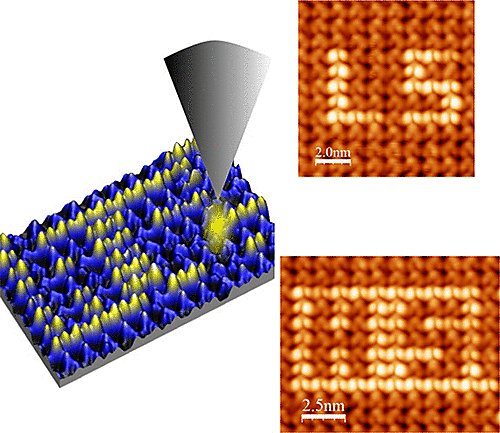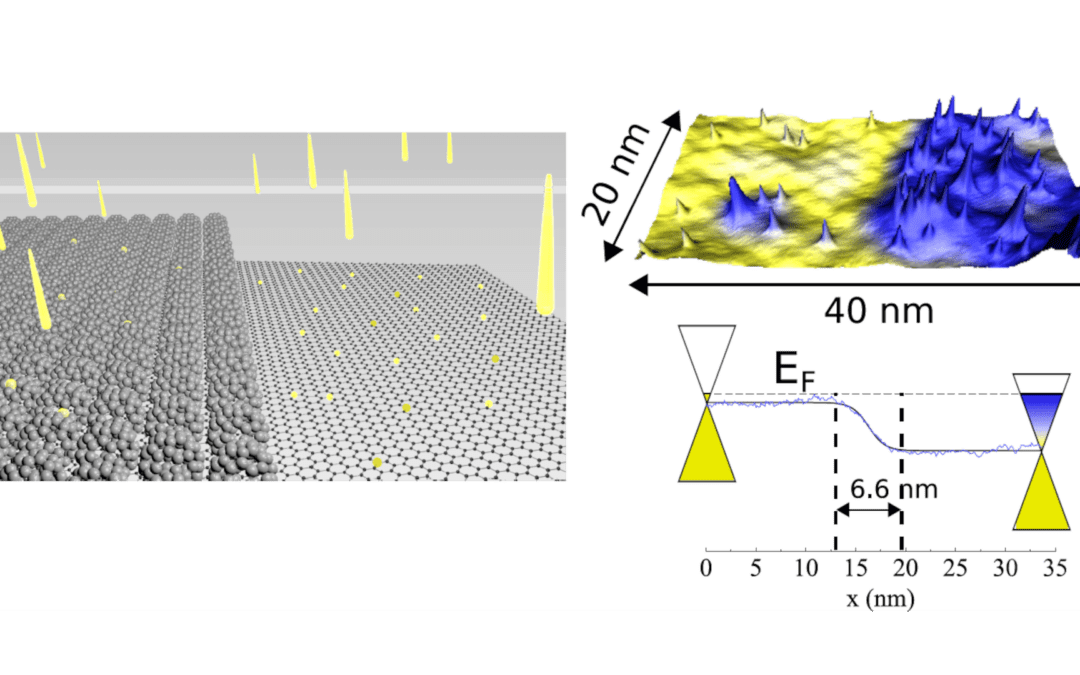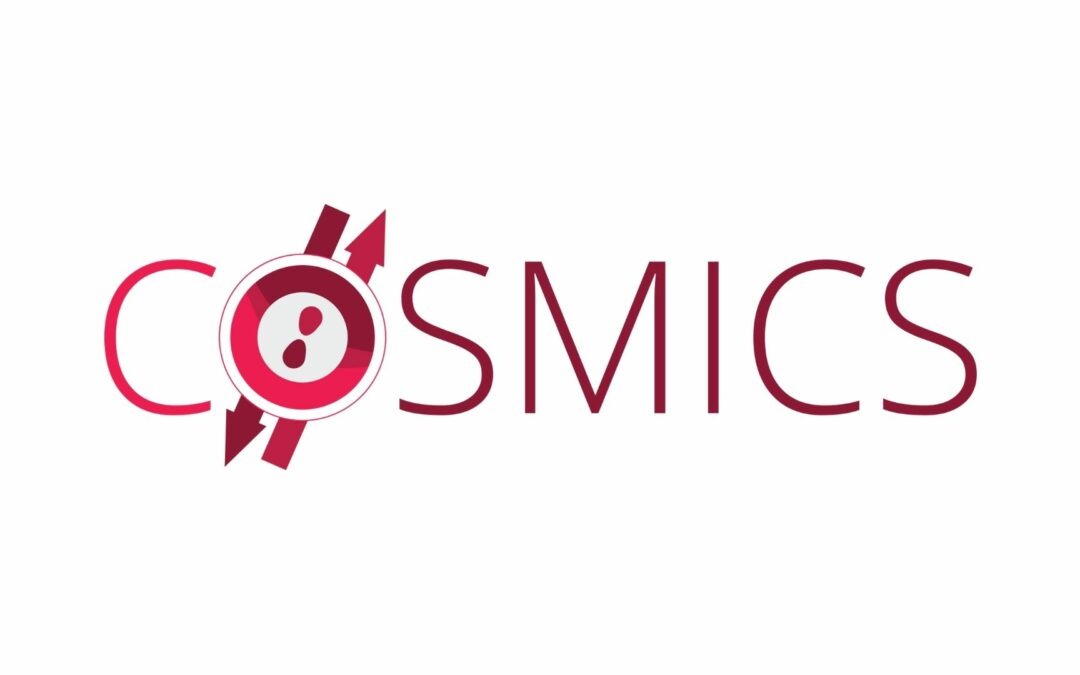Spin-transition molecules exhibiting bistability are particularly interesting for the development of innovative electronic and spintronic devices, as they exhibit two spin states that can be controlled by external stimuli.

Figure:
a) Diagram of voltage pulse manipulation. Topographic STM images (V=0.3 V, I=3 pA) of b) 10x10nm2 and c) 10×12.5nm2 on which “LS” and “HS” have been written by voltage pulse manipulation.
By using low-temperature scanning tunneling microscopy, researchers from the STM team at the MPQ laboratory have recently been able to induce, through voltage pulses, the switching between high-spin and low-spin electronic states of self-assembled spin-crossover molecules in densely packed 2D networks on Au(111) and Cu(111) surfaces.
On Au(111), voltage pulses lead to non-local switching of the molecules from one spin state to the other, followed by spontaneous relaxation back to their initial state within a few minutes. In contrast, on Cu(111), individual manipulation of the network molecules can be achieved to place them in the desired state. They retain their new configuration for extended periods of time. The demonstrated memory effect on Cu(111) arises from the competition between long-range intermolecular interactions and molecule/substrate coupling, as confirmed by mechanistic simulations.
Contact :
Amandine Bellec (amandine.bellec@u-paris.fr)
Référence :
Voltage-Induced Bistability of Single Spin-Crossover Molecules in a Two-Dimensional Monolayer, Yongfeng Tong, Massine Kelaï, Kaushik Bairagi, Vincent Repain, Jérôme Lagoute, Yann Girard, Sylvie Rousset, Marie-Laure Boillot, Talal Mallah, Cristian Enachescu, and Amandine Bellec, Journal of Physical Chemistry Letters, 12, 11029 (2021).
À lire aussi

Materials science – When the surface reaches deep inside…
Crystalline surfaces often exhibit reconstructions, usually assumed to affect only a few atomic layers below the surface. A collaborative study (conducted by the Matériaux et Phénomènes Quantiqueslaboratory in Paris, the Institut P’ in Poitiers, and the SixS beamline...

Pint of Science
Several of our researchers are participating in the Pint of Science festival, which is celebrating its 10th anniversary this year. It is one of the largest science festivals in the world. Until May 24th, researchers and the general public come together over a drink in...

Revealing the electronic profile of a p-n junction in doped graphene.
Graphene, composed of a single layer of carbon atoms, possesses unique and promising physical properties in various fields, particularly in electronics. Figure :Diagram (left) representing a cluster of C60 molecules used as a mask to protect graphene during doping by...

Molecular spintronics: a short movie
The European FET-OPEN COSMICS project, of which the MPQ laboratory (resp. Amandine Bellec) is one of the 6 partners, has developed a short movie presenting molecular spintronics and the challenges of the project. The project is based on a collaboration between...
